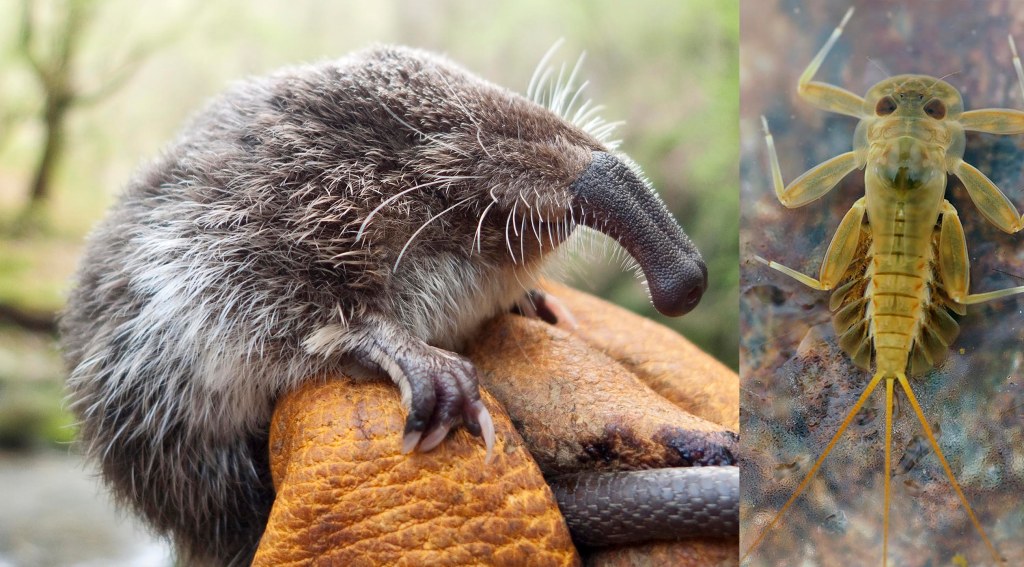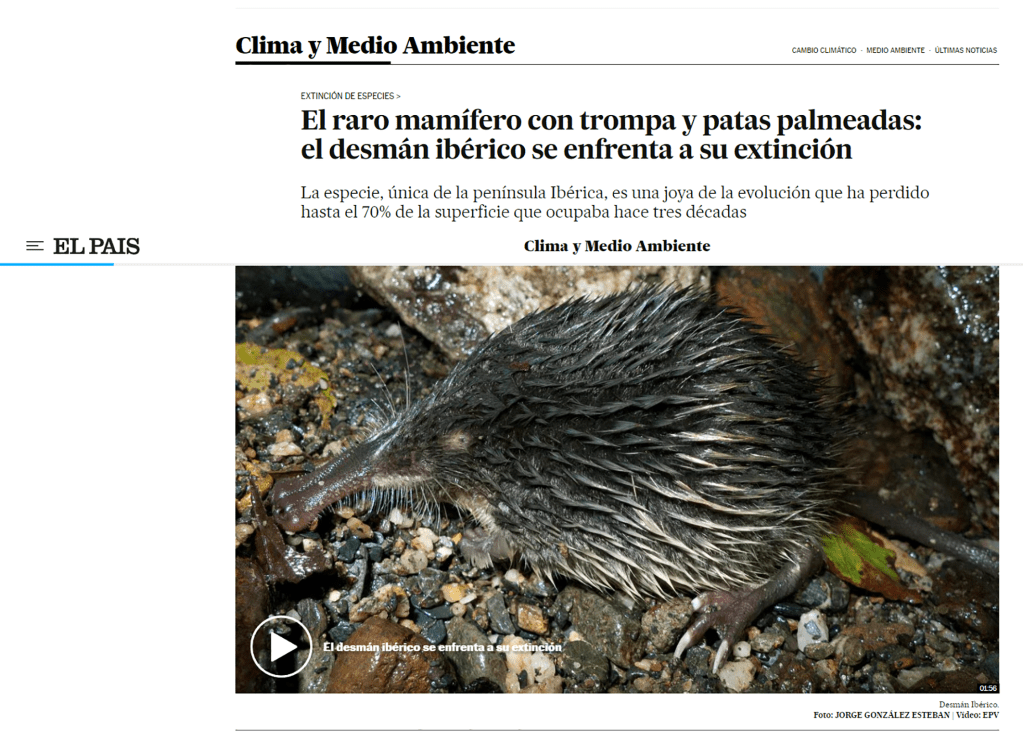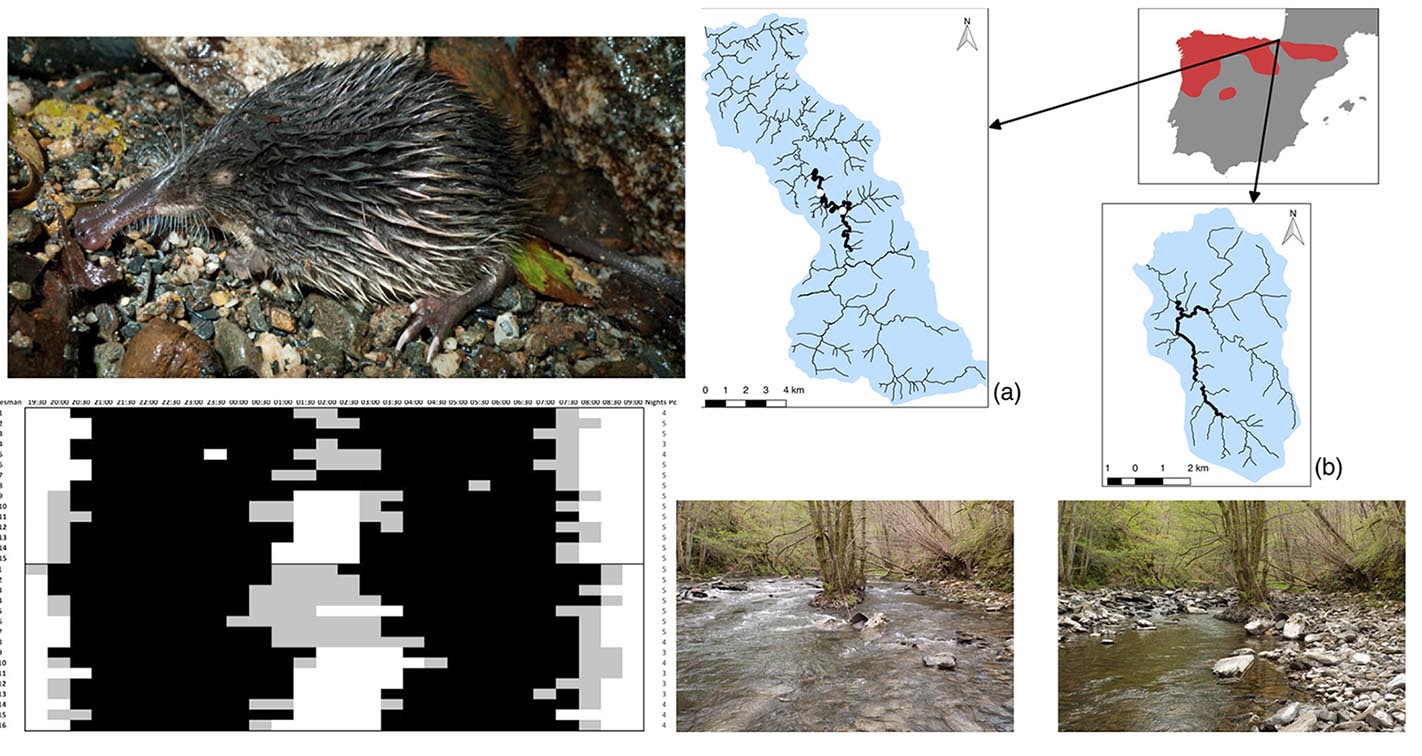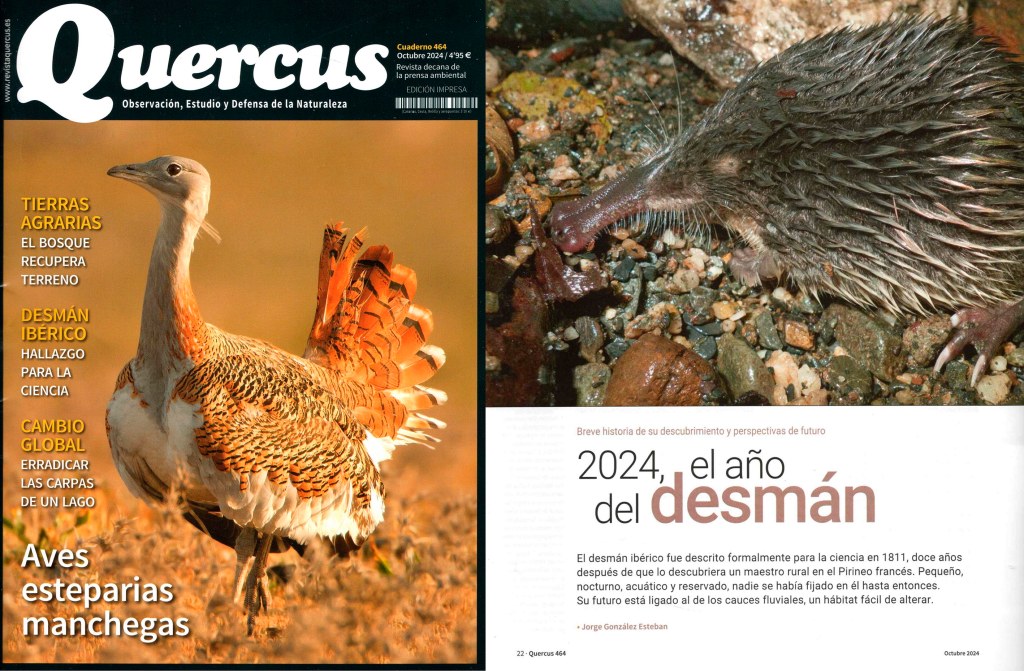LO QUE NECESITAS SABER SOBRE LA ALIMENTACIÓN DEL DESMÁN. AHORA EN PÍLDORAS DE AUDIO Y EN ESPAÑOL
Dos simpáticos divulgadores virtuales extraen el jugo de cuatro artículos sobre la alimentación del desmán. Cuatro audios cortos y amenos que te harán mirar el río de otra manera ¿Qué importa más? ¿Las características del restaurante o la calidad del menú? El desmán ¿especialista o generalista? ¿Qué hace apetitoso a un insecto a los ojos de un desmán? Las claves aquí.

La dieta del desmán
Mejor cuanto más rápido
Es el restaurante, no el menú
Selección de presas en la dieta del desmán
LO QUE NECESITAS SABER SOBRE LA GENÉTICA DEL DESMÁN. AHORA EN PÍLDORAS DE AUDIO Y EN ESPAÑOL
Es habitual que los artículos científicos se nos hagan bola. No es un formato pensado para la divulgación del conocimiento y pese al interés que pueda suscitar un determinado tema, muchos lectores no pasan de leer el resumen en diagonal. La IA ofrece una oportunidad para salvar el obstáculo que supone leer un documento técnico (habitualmente en un idioma que no es el nuestro). He subido aquí tres «resúmenes de audio» que condensan lo que necesitas saber sobre la genética del desmán. Se ofrecen en forma de conversación entre dos personas, a modo de programa radiofónico, en la que se comenta el texto con un lenguaje ameno y accesible. La precisión del discurso y la claridad del hilo argumental me han parecido asombrosas. Para escuchar mientras picamos cebolla o en el atasco del próximo apagón (los puedes descargar).

Estructura genética del desmán
El genoma del desmán
Endogamia y heterocigosidad en desmán. Un caso concreto
Cuenta atrás para el desmán ibérico
Una breve charla con Antonio Ordoñez en su canal Terra Mirabile para dar a conocer el estado de conservación del desmán.
El desmán en Objetivo Planeta
El desmán en los informativos de la tele pública. Treinta minutos para poner encima de la mesa la situación de la especie, problemas y soluciones.
2024 Año del DESMÁN. Los váteres siguen dando sus frutos.
Hace ya diez años que llegamos a un acuerdo con estos simpáticos bichejos. Dejarían de esquivarnos y a cambio les proporcionaríamos lugares tranquilos y resguardados donde hacer sus cosas y relacionarse. Estos VÁTERES han resultado ser un estupendo punto de encuentro entre humanos y desmanes, que seguimos aprovechando para conocer un poco más sobre una especie que puede tener los días contados. Muestra de ello es el último artículo que hemos publicado.
Vendrán más en breve. Permanezcan atentos a sus pantallas.
Un desmán moribundo llama por fin la atención de la prensa nacional
¿Recuerdan el chiste aquel que dice…? ¡Pepe, qué susto! ¡Hoy oí hablar tan bien de ti que creí que habías muerto! Pues algo parecido le acaba de pasar al desmán. Ha tenido que entrar terminal en la UCI para alcanzar el olimpo de un diario de tirada nacional. Las «joyas de la evolución» solo cotizan al alza momentos antes de desaparecer.

Conquistando al desmán por el estómago
Es una forma de hablar, claro. No hemos camelado al bicho, pero sí sabemos hoy bastante más que cuando empezamos a darle vueltas a esto de la alimentación del desmán «de los Pirineos». Amaiur Esnaola ya leyó su tesis (en plena pandemia), pero acaba de salir ahora publicado el último artículo y me apetece hacer esta breve reseña. Siete años convenciendo a los desmanes de que todos salíamos ganando si se comprometían a cagar bajo techado y nos facilitaban ese «oro negro» que tanto nos costaba encontrar, desentrañando con ayuda de la genética hasta el último de los pobres invertebrados que acababan en sus fauces, dilucidando si era más importante el restaurante o el menú, si las aguas rápidas son más atractivas que las lentas o si es mejor comerse un buey que cien golondrinos. Ha sido una aventura apasionante que nos deja un poco más viejos, pero mejor preparados para contestar las preguntas clave que necesitamos para conservar esta especie.

Malas noticias desde Portugal
In 1993-96, desmans were recorded at 85.1% of sites, and their presence was positively related to stream order and slope. In 2014-15, desmans were only found at 31.1% of sites, and their presence was positively related to slope steepness and negatively to stream order and maximum temperature of the warmest month. The extinction rate across periods was 63.5%, and the probability of extinction increased with stream order and declined with slope steepness. Maps of predicted distribution and extinction indicated that while the species was widely distributed in the first period, it largely disappeared thereafter from the main rivers and the largest tributaries, persisting mostly in stream headwaters in more mountainous areas. The severe decline found in ours and other studies suggest that the conservation status of the Pyrenean desman may need to be upgraded, and highlights the importance of headwater streams for its conservation. Furthermore, this study supports the view that headwater streams may be increasingly important for biodiversity conservation in modified river systems, favouring the permanence of remnant, albeit fragmented populations.
Need for speed. Cuanto más rápido, mejor.

The results highlight the ecological relevance of riffles as foraging habitats of desmans, and therefore as key features for their conservation. It suggests that channel modifications that reduce the areal cover of riffles impair habitat quality for this species. In addition, water diversion for hydropower is likely to be detrimental for desmans, as it reduces discharge and flow velocity in the bypassed river sections.
Need for speed. Preference for fast-flowing water by Pyrenean desman Esnaola et al 2018

